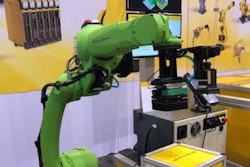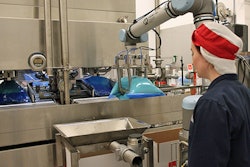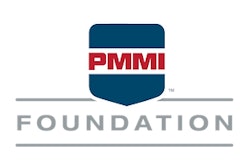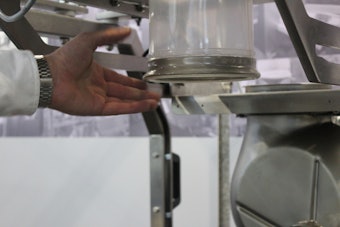The 4.0 challenge
Since it was first used by the German government in a 2011, the Industry 4.0 concept has been a buzz topic for many manufacturing sectors. Broadly, it can be understood as updated methods of production in which machines and products are digitally networked together.
Incorporating diverse concepts – like the Internet of Things, Cloud computing, and artificial intelligence – its goal is to change traditional industrial production plants into the smart factories. How to most efficiently adopt these concepts into the packaging industry remains a challenge, however.
In its new study The Impact of Industry 4.0 on Packaging to 2023, Smithers Pira pinpoints the nascent technologies that are enabling this fourth industrial revolution and highlights five major changes that will be witnessed in the next five years.
- Automation & Robotics
- Smart Packaging
- Big Data & Cloud computing
- Mass-customisation
- E-commerce
Each is analyzed across five key stages in the packaging production and use cycle. This article examines key future developments in Automation & Robotics.
Smart factories 2018
The packaging industry is responding to increasing brand owner demands for shorter product life cycles and cost driving variation – leading to shorter runs, more line changes and more down time on traditional converting lines. A new generation of robotic systems and, in particular, improvements in data flow means package production can integrate and connect key processes – design, production, distribution, maintenance – into a single holistic approach. The most significant impacts of new robotic platforms will be felt in converting and distribution.
Bright Dairy, the third biggest player in China’s growing dairy foods market, has collaborated with Tetra Pak to design a manufacturing facility for yogurt. When fully integrated, it will be able to process 500 tons of raw milk daily. All processing and packaging operations in the plant and their enterprise resource planning (ERP) systems will be integrated with the Swiss firm’s PlantMaster MES Suite.
The platform includes equipment, quality and utility management, a warehouse management system plus traceability analysis and reporting from reception of raw milk to warehouse handling using QR codes. Tetra Pak provided the PlantMaster MES Suite, a solution that connects processing and packaging in one system and on one screen.
In December 2017 BASF embarked on a digital transformation via partnership with Dutch start-up company Ahrma to approach the growing market for smart logistic solutions and a more transparent, reliable and efficient supply chain.
Market challenges
To further advance the Industry 4.0 concept for automation, there are five key challenges that Smithers Pira sees as essential across the next five years.

Co-operating with robots
Human-robot interaction is today complicated because of the risk for injuries. Pre-industry 4.0 manufacturers solved this issue by not letting humans and robots share workspaces.
This will change with the evolution of superior artificial intelligence, allowing for collaborative working between people and a new generation of co-operative robots, or cobots. Collaboration is not only about safety, it means that people and robots working close together with flexibility and productivity.
In addition, a different class of cobots are taking shape. Dubbed chatbots, these are designed to aid knowledge workers by assembling information from backend systems, such as the latest inventory levels or arrival time of the shipment. They are intended to be accessible via a variety of interfaces such as web, mobile app or AR glasses.
Read more about cobots and AI technology in food and beverage processing.
System-wide machine learning
Historically, automated systems have been limited by the vision and software installed by the original programmer. This approach is changing as superior machine learning algorithms are installed.
Machine learning algorithms are required with computational methods to improve themselves, or the equipment they operate – in effect learning information directly from data without relying on a pre-set and fixed equation or program without human interaction. For these to optimize production, the more data that can be produced the better, and the greater the refinement of performance. Translated to the packaging industry this will increasingly be about analyzing information from thousands of remote sensors to reduce product defects, shorten unplanned downtimes, improve transition times, and increase production speed.
Robotic systems can already proactively monitor and adapt to changes in a production line. By networking multiple machines, each robot will increasingly be able to adapt dynamically not just to its work, but that of other robot and humans within the smart factory.
Major companies are now making investments in machine learning-powered approaches to improve all aspects of manufacturing. It is projected to grow noticeably and in the coming five years this will spread for specialized industries into mainstream sectors, including packaging. To realize machine learning’s full potential however, companies must break down data silos. Pooling data for advanced synthesis across companies is key to creating new, performance-based business models.
A common machine language
Industry 4.0 cannot operate without standardized interfaces between machines. Packaging equipment producers are a step ahead of the rest of the industry in this with the Packaging Machine Language (PackML). First developed over a decade ago, this digital communication standard allows a common interface experience and operational consistency across a packing line.
The robot producers have agreed to use PackML moving forward. By 2023 the language is likely to enjoy to become a global industry standard. For example, EUROMAP – the umbrella organisation of the European plastics and rubber machinery industry –recently accepted the PackML for Industry 4.0 work.
A changing labor force
With a higher degree of automation in a smart factory, fewer workers will be needed. Lower skilled workers, like drivers and cleaners, will face redundancy. In contrast, there will be a premium on employing more skilled workers – especially software engineers and programmers.
The introduction of more robots in production plants will change strategic geographical considerations. Relocating facilities in search of cheap labor will be less of a priority – hence packaging manufacturers can relocate plants closer to their customers and realize new time and logistics savings.
This will allow some rebasing of factories to North America and Western Europe. Meanwhile, the importance of software means large firms will be able to control multiple sites from a centralized hub, giving greater control and uniformity in package production and printing.
Improved cyber security
Stuxnet – programmed by the Israeli intelligence services to disrupt Iran’s uranium enrichment – has shown how vulnerable an integrated plant can be to computer viruses. And as more and more systems are connected to smart devices, enterprise systems and the Internet, pack manufacturing operations will be increasingly exposed to cyber attacks.
It is easy for a determined hacker to break in to the network and download control logic to an industrial controller or change its configuration. Thus, there is a growing onus to adopt integrated cyber security solutions and implement monitoring software to protect vital equipment.
The impact of increased automation and other key components of Industry 4.0 are ranked and assessed critically in the new Smithers Pira study The Impact of Industry 4.0 on Packaging to 2023.
In Case You Missed It - Article first published December 10, 2018. Submitted by Smithers Pira.
Learn more about industrial robots in food and beverage processing by downloading PMMI Business Intelligence's free white paper, "Industrial Robot Opportunities in Food and Beverage Opportunities."





















